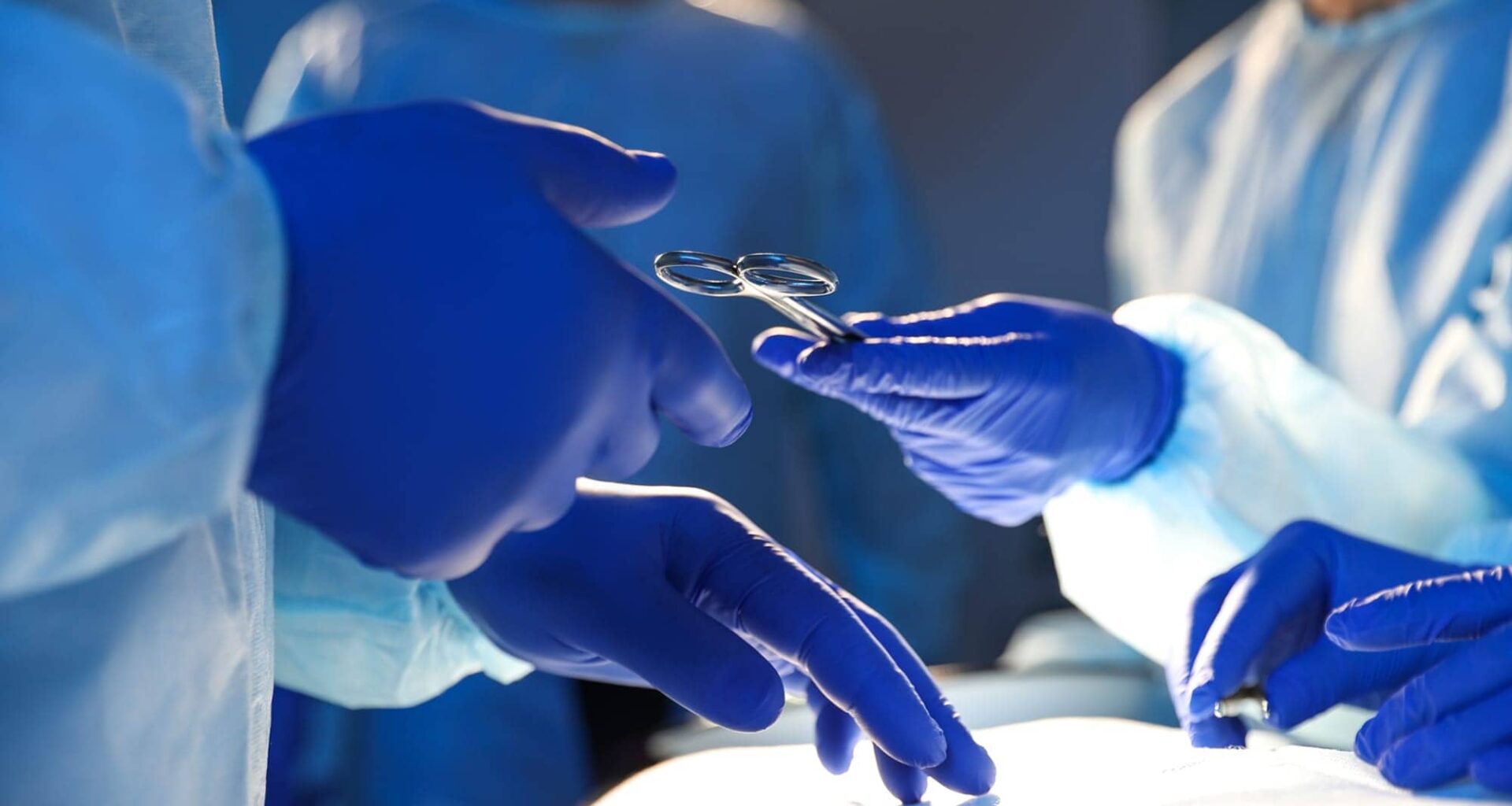Patients with allergic conditions—including eczema, asthma, and hay fever—may face more problems after certain types of surgery, according to research at ACAAI 2025.
RT’s Three Key Takeaways:
Allergic Conditions and Surgery Risks: Patients with allergic diseases such as eczema, asthma, or hay fever face higher rates of postoperative complications due to heightened inflammation and immune sensitivity.
Breast Reconstruction Findings: Among more than 20,000 women studied, those with allergic skin conditions were significantly more likely to experience implant infections, capsular contracture, rupture, or implant removal following breast reconstruction.
Bone Graft Complications: A second study of over 38,000 adults revealed that individuals with allergic conditions had increased risks of infection, osteomyelitis, and implant failure, underscoring the need for enhanced surgical planning and monitoring in this population.
Patients with allergic conditions—including eczema, asthma, and hay fever—may face more problems after certain types of surgery, according to research at ACAAI 2025. The research suggests that the inflammation and immune system changes that come with these conditions can make it harder for the body to heal and may increase the risk of infection after surgery.
In one large study, researchers looked at more than 20,000 women who had breast reconstruction after cancer surgery. Those with eczema, dermatitis, or other allergic skin conditions were more likely to have complications with their breast implants — including infections, scar tissue buildup (called capsular contracture), and implant rupture — than women without these conditions.
Over the three years following surgery, patients with atopic (allergic) skin disease were also more likely to need implant removal or additional surgeries to fix problems.
“People with eczema or similar skin conditions already have more sensitive skin and a higher level of inflammation,” said Philong Nguyen, BS, lead author of the study. “That seems to make surgical healing more difficult and increases the chance of infection.”
In a second study by some of the same investigators, the researchers looked at more than 38,000 adults who had bone graft surgery, often used to repair or rebuild bone. Those with allergic conditions such as eczema, asthma, or hay fever had higher rates of infection, bone inflammation (called osteomyelitis), and the need for additional surgery to remove or replace implants.
“Even two years after their initial surgery, people with atopic conditions were still more likely to have problems like infection or implant loosening,” said Joshua Wang, MS, lead author of the study.
“These results suggest that allergic conditions can affect the body’s ability to heal after surgery — not just in the skin, but in the bones as well.”
Authors of both studies agree that awareness of this risk may inform preoperative counseling and prompt more vigilant postoperative monitoring in this patient population.
ASSOCIATION BETWEEN ATOPIC SKIN DISEASE AND IMPLANT-RELATED COMPLICATIONS IN BREAST RECONSTRUCTION
Nguyen*1, J. Wang1, A. Pham1, H. Chan1, T. Nguyen1, W. Lee1, Y. Tanas2, 1. Galveston, TX; 2. Houston, TX.
Introduction: Capsular contracture is a common complication of implant-based breast reconstruction. While known risk factors include infection, radiation, and patient factors, the impact of preexisting atopic skin conditions remains unclear. Given their barrier defects and immune dysregulation, atopic patients may be more prone to inflammation, infection, and fibrosis. This study investigates the association between atopic skin conditions and implant-related complications.
Methods: We identified female breast cancer patients aged ≥18 who underwent implant-based reconstruction (2002–2022) using ICD-10 and CPT codes. Patients were stratified by prior diagnoses of eczema, dermatitis, or other allergic skin conditions. Propensity score matching balanced demographics, comorbidities, autoimmune diseases, and treatment exposures (radiation, chemotherapy, hormone therapy, steroids). Outcomes included capsular contracture, implant complications, and revision surgeries. Risk ratios (RRs) were calculated at 1, 2, and 3 years post-op, with significance set at p < 0.05.
Results: After matching each cohort had 10,205 patients. Patients with atopic conditions had significantly higher risks of implant complications (RR=1.2,p<0.0001), capsular contracture at 2&3 years (RR=1.2,p≤0.0005), and revision surgeries at all time points (RR=1.1,p<0.001) than those without atopic or allergic skin conditions. Implant removal risk was elevated at 1,2,&3 years (RR=1.2,p≤0.004), rupture risk increased at 2&3 years (RR=1.4,p≤0.0457), and implant infection rates were higher at all time points (RR=1.2,p≤0.0009). Conclusion: Atopic skin conditions are associated with increased risk of implant complications and revision surgeries. This multi-timepoint analysis underscores the value of comprehensive risk assessment to inform surgical planning and patient care.
ATOPIC DISEASE IS ASSOCIATED WITH INCREASED COMPLICATIONS FOLLOWING BONE GRAFTING: A MULTICENTER RETROSPECTIVE COHORT STUDY
Wang*1, P. Nguyen1, A. Pham1, H. Chan1, T. Nguyen1, Y. Tanas2, 1. Galveston, TX; 2. Houston, TX.
Introduction: Atopic diseases, including asthma, atopic dermatitis, and allergic rhinitis, are marked by chronic immune dysregulation, which may impair wound healing and increase susceptibility to postoperative complications. While their effects on soft tissue healing are well documented, their impact on bone graft outcomes remains unclear. This study aimed to evaluate atopic disease’s impact on bone grafting complication.
Methods: A retrospective cohort study was conducted using the TriNetX research network. Adult patients with documented bone grafting procedures and prior atopic disease were compared to a matched cohort without atopic disease using 1:1 propensity score matching based on demographics and comorbidities. Postoperative outcomes were assessed at 90 days and 2 years. Hazard ratios (HR) with 95% confidence intervals (CI) were calculated for each outcome of interest. Significance is set at p<0.05.
Results: After propensity score matching the atopic and no atopic cohorts had 19,334 patients each. At 90 days, patients with atopic disease demonstrated higher risks of infection or wound complications(HR=1.19,95%CI=1.08–1.32), osteomyelitis(HR=1.29,95%CI=1.12–1.48), and hardware removal (HR=1.22,95%CI=1.05–1.41). At 2 years, the atopic cohort remained at increased risk for infection or wound complications (HR=1.20,95%CI=1.11–1.31), osteomyelitis (HR=1.20,95%CI=1.08–1.33), hardware removal (HR=1.21,95%CI=1.11–1.33), mechanical loosening(HR=1.35,95%CI=1.17–1.56) and revision surgery (HR=1.16,95%CI=1.09–1.25). No differences observed in graft failure, pathological fractures, surgical intervention/debridement, or opioid abuse.
Conclusion: Patients with atopic disease undergoing bone grafting procedures experience higher rates of infection-related complications, hardware removal, and revision surgery, particularly at longer-term follow-up. Awareness of this risk may inform preoperative counseling and prompt more vigilant postoperative monitoring in this patient population.

